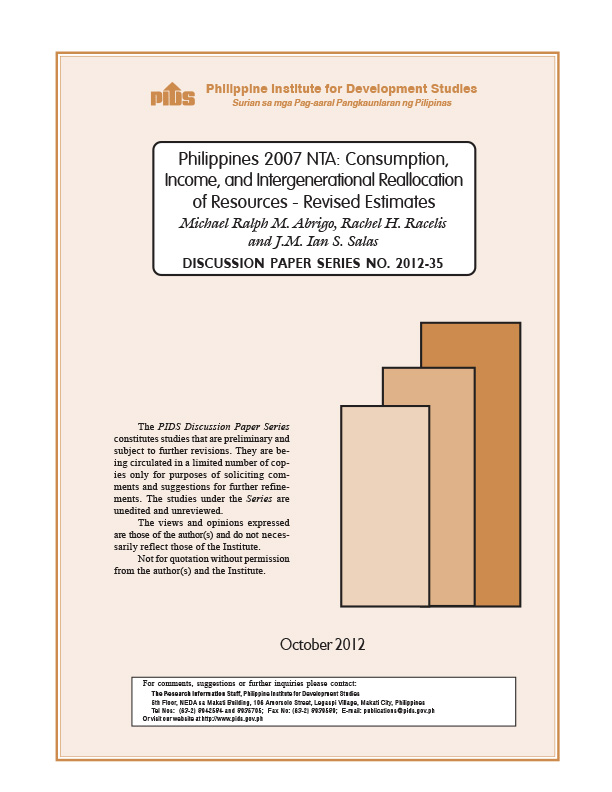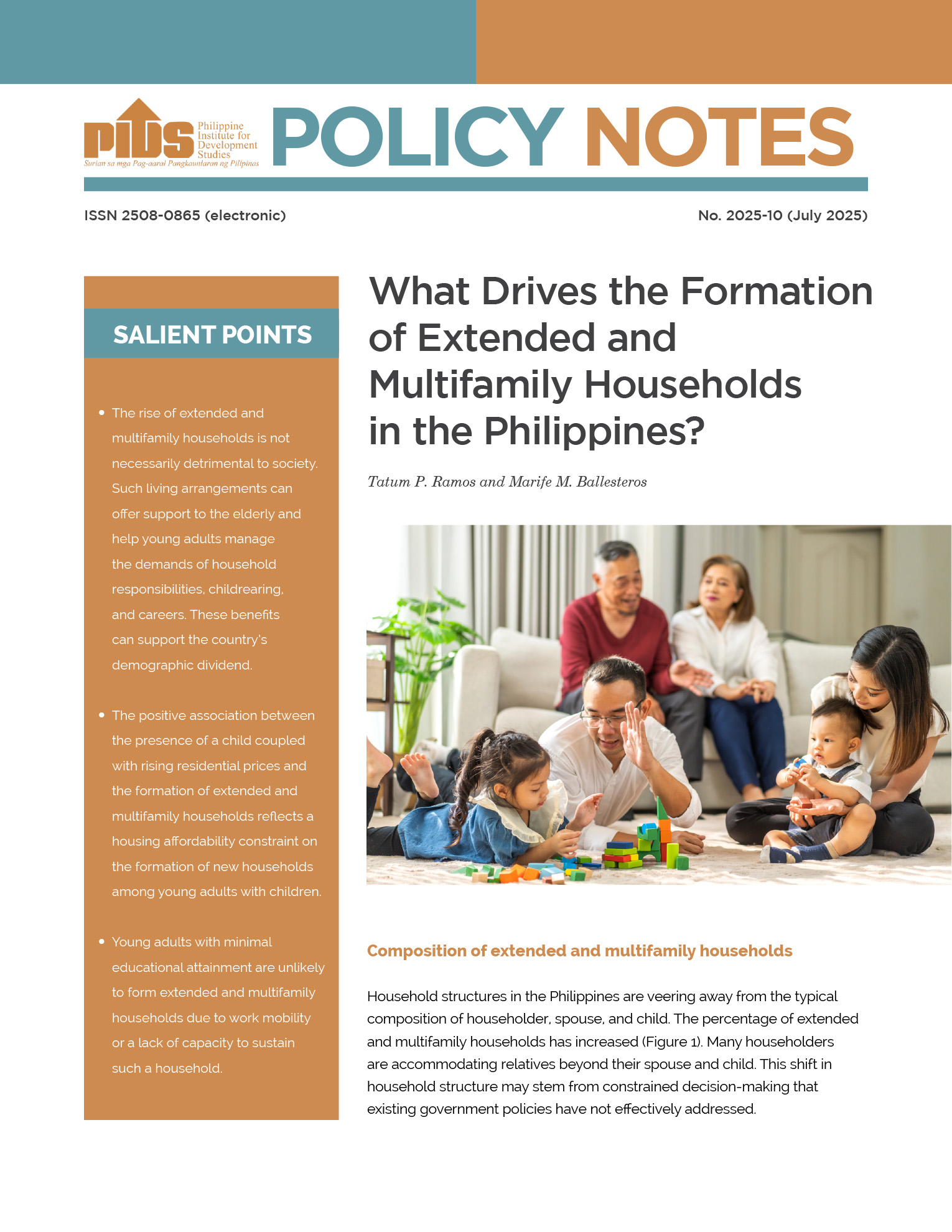This paper describes the revised national level estimates of the 2007 Philippines NTA. The differences between the previous and the revised 2007 Philippines NTA Flow Accounts estimates are due to the change in the treatment of overseas Filipino workers` (OFW) remittances: treated as interhousehold transfers in the previous estimates; and treated mainly as labor income (earnings) in the revised estimates. The main changes in the estimates and results are those related to labor income and lifecycle deficit including: (1) the peak ages in per capita earnings and self-employment are both lower by one year at 28 years (previously 29 years) and 44 years (previously 45 years), respectively; (2) lifecycle deficit age cut-off are 24 years (previously 25 years) for the young and 59 years (previously 58 years) for the elderly; and (3) there is negative lifecycle deficit (i.e., there is surplus) for ages 25-58 years (previously 26-57 years).
Citations
This publication has been cited 3 times
- Racelis, Rachel H. et. al. 2015. Philippines 2011 National Transfer Accounts estimates of consumption and labor income age profiles: Discussions on the 1991-2011 age profile change and implications on economic gains from the first demographic dividend. Discussion Papers DP 2015-45,. Philippine Institute for Development Studies.
- Racelis, Rachel H. et. al. 2016. Consumption, labor income, and lifecycle deficit by urban-rural residence and by income group: Philippines NTA 1991, 1999, and 2011. Discussion Papers DP 2016-31. Philippine Institute for Development Studies.
- Salas, J.M. Ian S., Michael Ralph M. Abrigo, and Rachel H Racelis. 2014. Comparing the 1999 and 2007 Philippine NTA estimates and examining the effects of a definitional change of overseas workers` remittances. Discussion Papers DP 2014-24. Philippine Institute for Development Studies.













